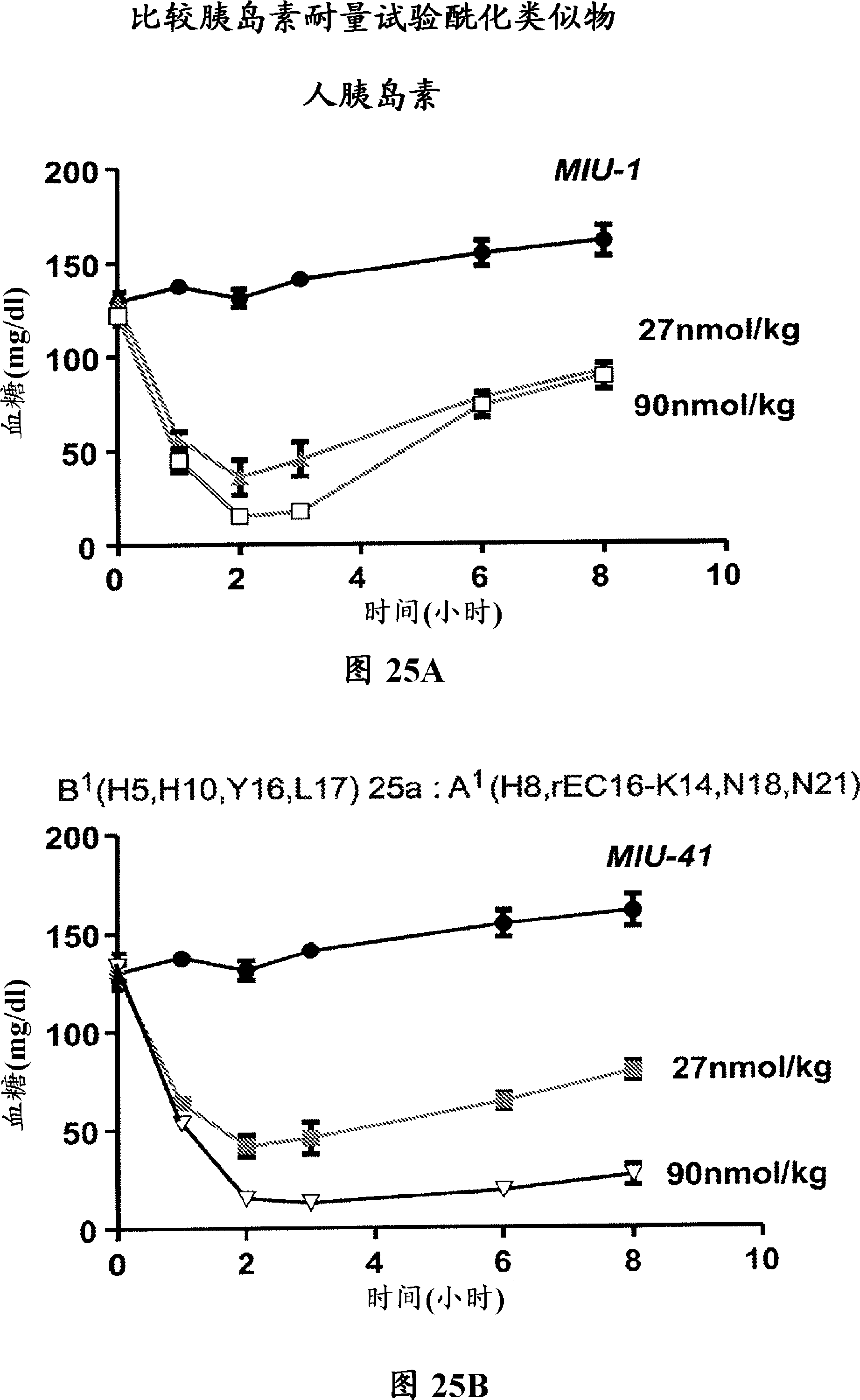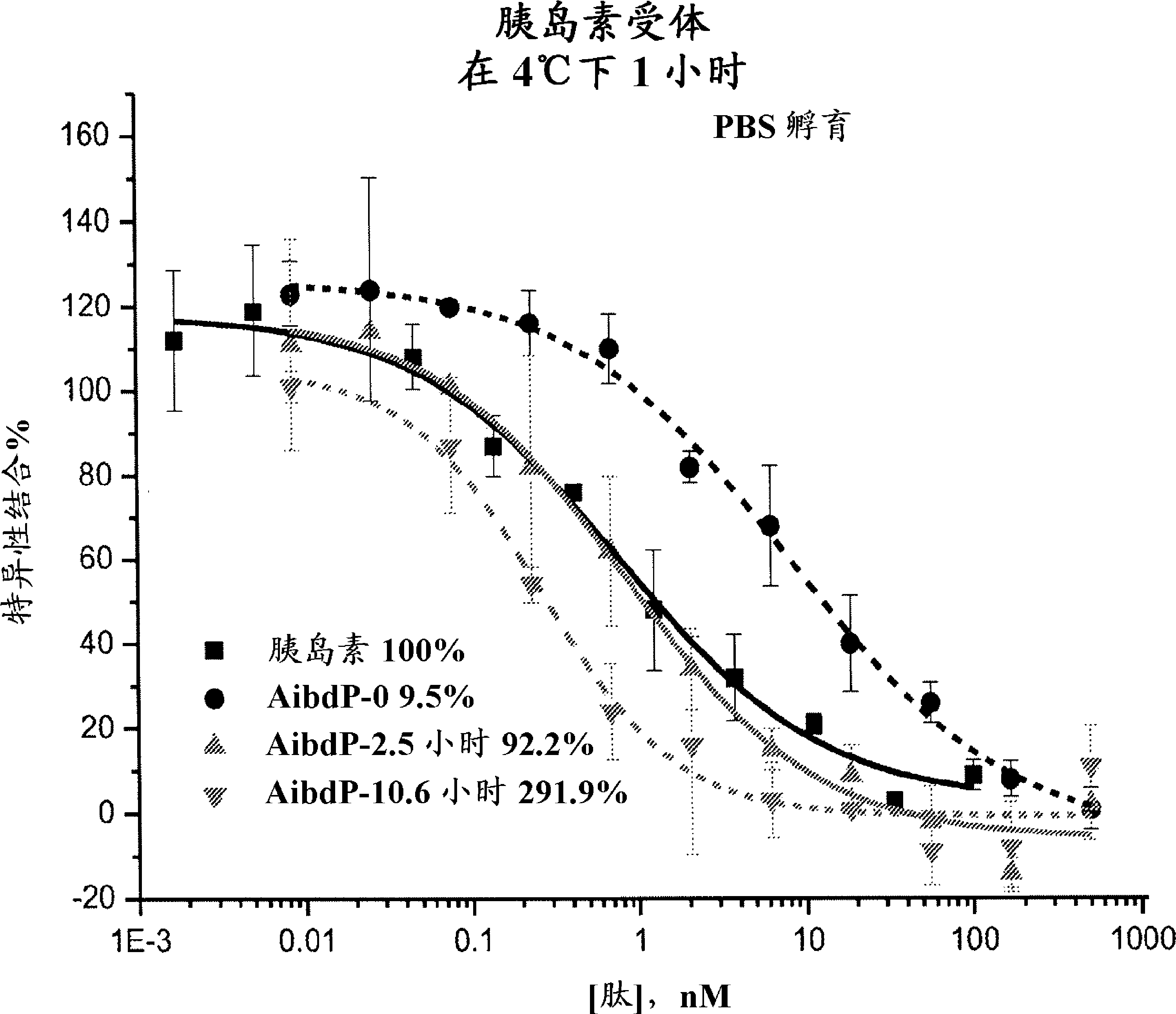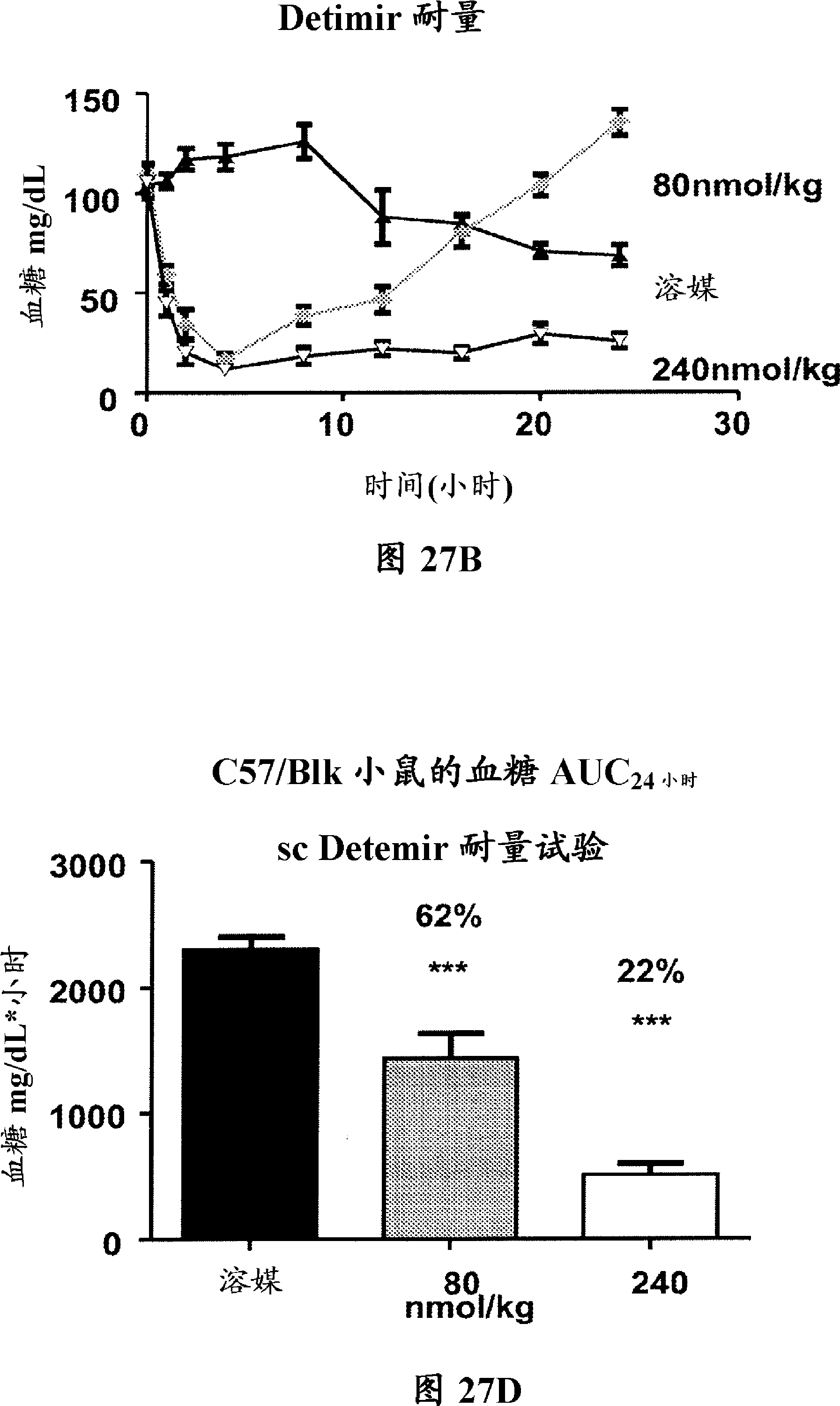CTP-based insulin analogs for treatment of diabetes
An analog, single-chain insulin technology, used in insulin, hormone peptides, metabolic diseases, etc.
- Summary
- Abstract
- Description
- Claims
- Application Information
AI Technical Summary
Problems solved by technology
Method used
Image
Examples
Embodiment approach
[0147] According to one embodiment, provided herein are insulin analogs modified to introduce one or more glycosylation sites. Glycosylation of peptide-based drugs can confer additional benefits on the base peptide, including increased serum half-life; increased functional in vivo half-life; and reduced degradation. Introduction of a glycosylation site into an insulin analog provides a site for attaching a sugar moiety to an insulin agonist such that when the insulin agonist is produced in a eukaryotic cell capable of glycosylation, the insulin agonist is glycosylated . In one embodiment, insulin analogs are provided wherein the peptide sequence has been modified by addition and / or substitution of amino acids to add new glycosylation sites not present in native insulin. In one embodiment, a glycosylation site is introduced at the amino- or carboxy-terminus of the B chain, or in the case of a single-chain analog, a glycosylation site may be introduced into the linking peptide ...
Embodiment 1
[1159] Synthesis of insulin A chain and B chain
[1160] Insulin A and B chains were synthesized on 4-methylbenzhydrylamine (MBHA) resin or 4-hydroxymethyl-phenylacetamidomethyl (PAM) resin using Boc chemistry. Peptides were cleaved from the resin using HF / p-cresol 95:5 for 1 hour at 0°C. After removal of HF and ether precipitation, the peptide was dissolved in 50% aqueous acetic acid and lyophilized. Alternatively, peptides were synthesized using Fmoc chemistry. Using trifluoroacetic acid (TFA) / triisopropylsilane (TIS) / H 2 O (95:2.5:2.5) cleaves the peptide from the resin for 2 hours at room temperature. The peptide was precipitated by adding excess diethyl ether, and the precipitate was dissolved in aqueous acidic buffer. The quality of the peptides was monitored by RP-HPLC and confirmed by mass spectrometry (ESI or MALDI).
[1161] Synthesized with a single free cysteine at amino acid 7, and all other cysteines are protected as acetamidomethyl A-(SH) 7 (Acm) 6,11,2...
Embodiment 2
[1168] PEGylation of amine groups (N-terminal and lysine) via reductive alkylation
[1169] a. Synthesis
[1170]Mix insulin (or insulin analogs), mPEG20k-formaldehyde (Aldyhyde) and NaBH at a molar ratio of 1:2:30 3 CN is soluble in acetate buffer at pH 4.1-4.4. The reaction solution consisted of 0.1 N NaCl, 0.2 N acetic acid and 0.1 N Na 2 CO 3 composition. The insulin peptide concentration was about 0.5 mg / ml. The reaction was carried out at room temperature for 6 hours. The extent of the reaction was monitored by RP-HPLC and the yield of the reaction was about 50%.
[1171] b. Purification
[1172] The reaction mixture was diluted 2-5 times with 0.1% TFA and applied to a preparative RP-HPLC column. HPLC conditions: C4 column; flow rate 10 ml / min; A buffer: 10% ACN and 0.1% TFA in water; B buffer: ACN containing 0.1% TFA; linear gradient B% 0-40% (0-80 minutes ); PEG-insulin or analog elutes at approximately 35% buffer B. After chemical modification by sulftolysis...
PUM
 Login to View More
Login to View More Abstract
Description
Claims
Application Information
 Login to View More
Login to View More - R&D
- Intellectual Property
- Life Sciences
- Materials
- Tech Scout
- Unparalleled Data Quality
- Higher Quality Content
- 60% Fewer Hallucinations
Browse by: Latest US Patents, China's latest patents, Technical Efficacy Thesaurus, Application Domain, Technology Topic, Popular Technical Reports.
© 2025 PatSnap. All rights reserved.Legal|Privacy policy|Modern Slavery Act Transparency Statement|Sitemap|About US| Contact US: help@patsnap.com



